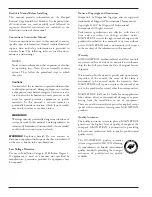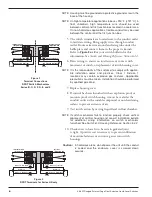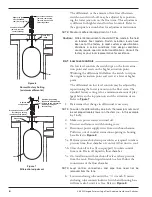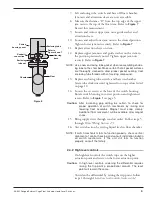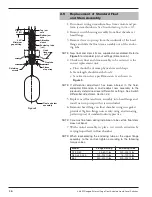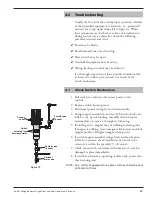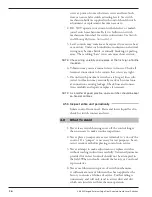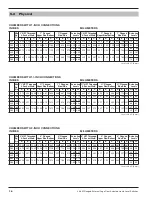
12
46-605 Flanged External Cage Float Actuated Liquid Level Switches
3.2
Check Sensing Unit
1. Reconnect power supply. Carefully actuate the switch
mechanism manually (use a non-conductive tool on electri-
cal switch mechanisms) to determine whether controlled
equipment will operate.
Caution:
With electrical power on, care should be taken to avoid
contact with switch leads and connections at terminal
block.
2. If controlled equipment responds to manual actuation test,
trouble may be located in the level sensing portion of the
control, float(s), stem(s), and magnetic attraction sleeve(s).
3. Check to be certain liquid is entering float chamber.
A valve may be closed or piping may be plugged.
Caution:
Be certain to pull disconnect switch or otherwise ensure
that electrical circuit(s) through control is deactivated.
Close operating medium supply valve on controls
equipped with pneumatic switch mechanisms.
4. Disconnect wiring from supply side of switch mechanism(s)
and remove electrical conduit or operating medium line
connections to switch housing.
5. Perform system shutdown to relieve pressure from float
chamber of control. Allow unit to cool.
6. Close shutoff valves (if equipped) to isolate control from
vessel. Drain off liquid in chamber if necessary.
7. On installations without shutoff valves, relieve pressure
from vessel and drain off liquid head above control
mounting level.
NOTE: Control chamber, connections, and pipe lines need not be
removed from vessel or boiler.
8. Remove switch housing assembly by loosening hex nut,
which is located immediately below housing base.
9. With switch housing assembly removed, inspect attraction
sleeve(s) and inside of enclosing tube for excessive corro-
sion or solids buildup. Such buildup could restrict move-
ment, preventing sleeve(s) from reaching field of switch
magnet(s).
10. If differential has been changed in the field by reposition-
ing the lower jam nuts on the float stem, check tightness
and position of the jam nuts.
NOTE: Differential adjustment affects a change in the amount of level
travel between switch-on and switch-off actuations.
Do not
attempt
adjustment without first consulting factory for assis-
tance in computing level differential change for your control.


